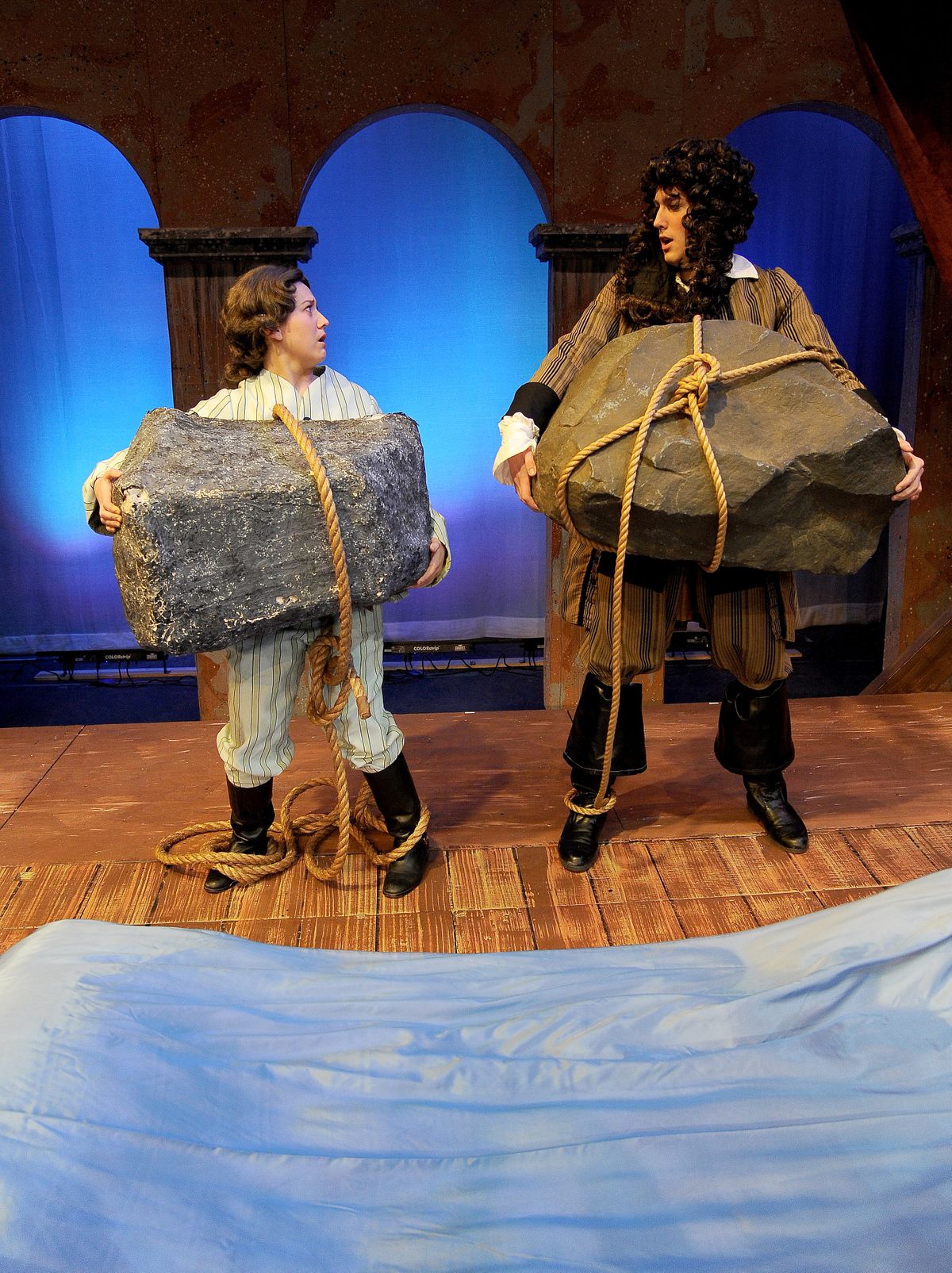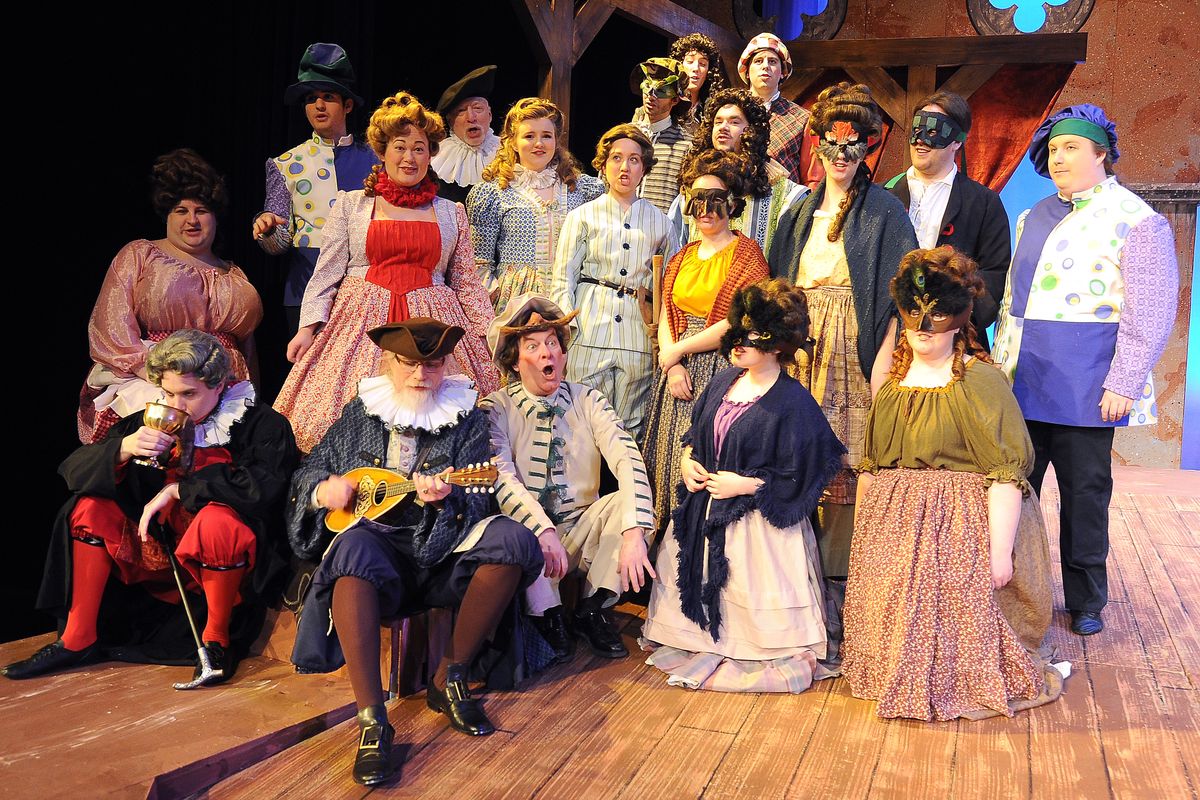‘Servant’ takes Civic to roots of comedy
Centuries-old play a ‘whirlwind’ of laughs
Erin Fitzgerald and Samuel Peters star in Spokane Civic Theatre’s production of “The Servant of Two Masters.” (Colin Mulvany)Buy a print of this photo
Commedia dell’arte was one of the most popular and influential forms of theater beginning in the Italian Renaissance, a storytelling style that relied on wild plotlines, stock characters and comic improvisation. Written by the prolific Carlo Goldoni and first performed in 1753, “The Servant of Two Masters” takes much of its inspiration from the tropes of commedia dell’arte, which also influenced many of William Shakespeare’s most famous comedies.
Patrick Treadway, who directed “Servant” premiering at Spokane Civic Theatre tonight, says the play gets much of its mileage from the insane complications of its plot.
“A good way to explain it is that it’s a very funny soap opera,” he said. “There’s an A plot, a B plot and a C plot, possibly even a D plot. It’s kind of a whirlwind, almost like a three-ring circus. … If you could have a three dimensional Tex Avery experience, this would be it.”
That cartoonish sensibility is what drives the story of “The Servant of Two Masters,” and simply describing what happens is enough to make you a bit breathless. See if you can follow this.
The play’s titular servant is named Truffaldino (played by Preston Loomer in the Civic production), a bumbling take on the traditional dell’arte harlequin character, who is traveling to Venice with his master Federigo.
(OK, here’s where it starts to get complicated.)
Federigo, it turns out, is actually dead: It’s his sister Beatrice (Erin Fitzgerald) in disguise, and she’s looking for Florindo (Samuel Peters), the man who not only killed her brother but who is also her lover. She’s also hoping to collect a dowry from the father of Clarice, the woman Federigo was planning to marry, which is problematic since Clarice (Chandler Jordan) has taken up with a new suitor in the wake of Federigo’s murder.
Got that? Well, it only gets more chaotic as it goes along.
Goldini’s story is essentially an ancestor to so many modern comedy conventions: He’s dealing with mistaken identities, unrequited love, slapstick physicality and that old conundrum in which one person tries to pull off two different jobs in two different locations at the same time.
“As a result, all of the characters are very familiar to us,” Treadway said. “The Marx brothers and even the Three Stooges borrowed really heavily from commedia dell’arte. It’s a fast-paced romp, as cliché as that sounds.”
Because commedia dell’arte relied so heavily on improvisation (“Servant” was one of the first to be completely scripted), Treadway said that the energy of the cast is perhaps the most important element of a production like this. Because of the interplay of his actors, he says that he actually modified his original concept to better highlight their talents.
“I came in with a very definite idea, but because of the chemistry of the people you get, things you don’t expect occur,” Treadway said. “The creativity and the comedy and the brainstorming in this particular piece, I think, is going to make this production extremely unique. Last night, I was cracking up at rehearsal, and I’ve seen this so many times. I really should be tired of it by now.”

